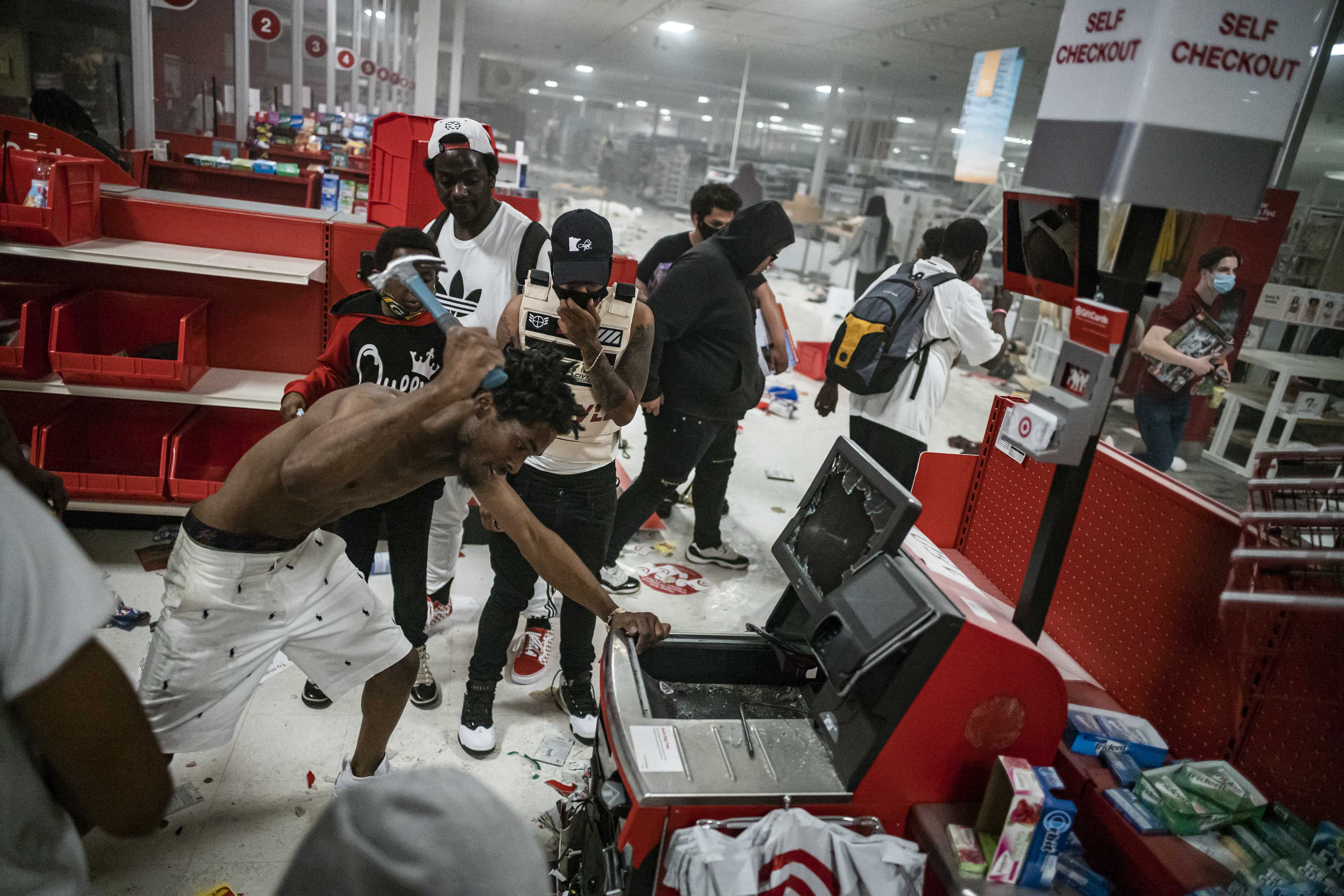Flames of very different types have burned across America overnight. Rioting is continuing in Minneapolis and in many other cities across the USA after the death of unarmed African-American man George Floyd in Minnesota.
George Floyd was pinned to the ground for 10 minutes by police, with officer Derek Chauvin kneeling on Floyd’s neck for several minutes. Chauvin has now been charged with murder.
At least 25 cities in the United States are under curfew as tense protests across the country threaten to turn violent after the death of George Floyd and other police killings of black men.
Police cars were set ablaze, windows were smashed and stores have been ransacked in the protests, which began in Minneapolis following Mr Floyd’s death on Monday when a police officer pressed a knee on his neck for more than eight minutes. The unrest has since become a national phenomenon as protesters decry years of deaths at police hands.
How did we get here?
As the protests in Minneapolis enter their sixth evening – with the movement spreading as far as London’s Trafalgar Square – let’s look back at the key events of the past week.
- George Floyd, a 46-year-old black man, was fatally arrested in Minneapolis, Minnesota, on Monday. A video posted on social media of the incident allegedly showed white police officer Derek Chauvin pushing down on Mr Floyd’s neck with his knee as he yelled, “I can’t breathe.” Mr Chauvin and his three colleagues present at the death were fired and an FBI investigation began.
- The protests started in Minneapolis the next day. They were initially peaceful protests, but on Wednesday some groups’ interactions with police became more violent and looting of local businesses began. Images of the protests were shared widely on social media.
- Minnesota Governor Tim Walz declared a state of emergency and ordered the deployment National Guard troops on Thursday as Minneapolis Mayor Jacob Frey, who supported the protests and Mr Chauvin’s arrest, asked for peace.
- By Thursday evening, larger stores were being looted and the conflict between protesters and police had escalated to the use of fireworks and projectiles. Minnesota paper the Star Tribune reported 170 fires were lit overnight. The riots spread to the neighbouring city of St Paul.
- Elsewhere in the US, on Wednesday and Thursday protests had begun in cities including Memphis and Los Angeles.
- On Friday, US President Donald Trump sent a tweet which indicated the military would use armed force with the now censored line, “When the looting starts, the shooting starts.” He has since continued to criticise the Minneapolis’ Democrat governor and mayor.
- A number of other protests broke out across the US: out the front of CNN’s headquarters in Atlanta, in Brooklyn and Lower Manhattan in New York, outside the White House, in Dallas and in Denver.
- It was also on Friday that Mr Chauvin was charged with murder and manslaughter in relation to Mr Floyd’s death. He is being held at the Ramsey County Jail in St Paul on $US500,000 bail.
- By Saturday, the protests had spread to 20 cities, with scenes of police cars set alight, protesters being hit by police cars, and journalists being arrested and injured. Minnesota announced they were activating their full National Guard.


